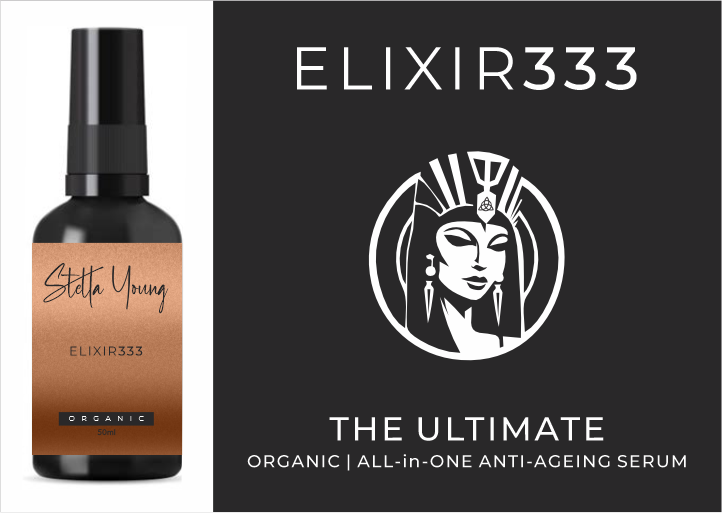Skincare Chemicals are Messing with Your Hormones and Causing Belly Fat

Endocrine disruptors – these sneaky troublemakers could be lurking in your skincare products, posing risks to your health. Let’s cut to the chase and uncover what they are and how to steer clear of them.
What Are Endocrine Disruptors?
Endocrine disruptors are substances, either natural or man-made, that can mess with your body’s hormonal system, part of the endocrine system. These pesky chemicals can mimic or interfere with hormones, leading to a whole host of problems, from developmental issues to reproductive woes. What’s worse, they’re stubborn and hang around in your body, potentially causing harm over time.
Where Do You Find Endocrine Disruptors?
They’re everywhere! From skincare products and makeup to personal care items and cosmetics, endocrine disruptors may be lurking in your daily routine. But that’s not all – they can also be found in fragrances, cleaning products, plastics, non-organic produce, unfiltered water, and even cookware. So, there’s a good chance you’re encountering these hidden disruptors regularly.
Every day, we encounter a whopping 80,000 toxins in our environment. The ones that hit us the hardest? The ones we eat and slather on our skin. They're the real game-changers.
Meet Your Endocrine System
Your endocrine system is like the body’s internal communication network. It consists of glands that churn out hormones, those crucial chemical messengers that keep your body humming along. Hormones are responsible for a wide array of functions, including metabolism, growth, mood, fertility, sleep, and more.
In both men and women, this system includes glands like the hypothalamus, pituitary, thyroid, thymus, pancreas, pineal, and adrenal glands. Men have the testes, while women have the ovaries, and during pregnancy, the placenta joins in to produce estrogen and progesterone.
The Common Culprits
Now, you might be wondering, “Which hormones are we talking about?” Well, here are some heavy hitters in the hormone department:
- Estrogen
- Progesterone
- Testosterone
- Dopamine
- Oxytocin
- Melatonin
- Growth hormone
- Luteinizing hormone
- Prolactin
- Thyroid-stimulating hormone
- Aldosterone
- DHEA and androgens
- Adrenaline (epinephrine)
- Noradrenaline (norepinephrine)
- Insulin
- Glucagon
The Risks of Endocrine Disruptors
It’s tough to quantify the exact impact of these disruptors, given the numerous exposures we face daily. However, studies suggest that they might contribute to conditions such as diabetes, obesity, thyroid problems, developmental issues, behavioral disorders, reproductive troubles, and even hormone-sensitive cancers.
In the animal kingdom, we’ve seen significant effects from these disruptors, leading some species to change sex due to exposure. In certain regions, chemicals such as atrazine in the water supply have turned male frogs into females. That makes me wonder if it could be why so many men start showing feminine attributes … something to think about.
Ditch the Plastic
One of the top tips to avoid endocrine disruptors is to kick the plastic habit. Swap plastic containers for stainless steel, coated aluminum, or glass alternatives in your food, beverage, skincare, and cosmetic choices. Also:
- Say goodbye to plastic water bottles and lunch containers, and opt for stainless steel and glass.
- If your food comes in plastic packaging, transfer it to a glass jar.
- Cut down on canned foods, as even those labeled “BPA-free” may not be endocrine-disruptor friendly.
- Avoid handling paper receipts and choose electronic ones when possible.
- Go for filtered water instead of bottled or tap.
- Don’t microwave or put plastic in the dishwasher.
Male mice who are exposed in the womb to bisphenol A, or BPA, a chemical compound found in some hard plastics and can linings, appear to be less masculine and less attractive to females once they mature, raising the possibility that the controversial chemical could subtly affect boys in similar ways. Something to think about!
Cosmetics and Endocrine Disruptors
Common Endocrine Disruptors in Skincare
In conventional skincare, endocrine-disrupting chemicals are aplenty. When it comes to phthalates, be on the lookout for those tricky Bs and Ds on product labels. Some notorious culprits include:
- DBP (dibutyl phthalate)
- DINP (diisononyl phthalate)
- BBP (benzyl butyl phthalate)
- BEP (butyl-ethyl phthalate)
- DNOP (di-n-octyl phthalate)
- DEHP (di-2-Ethylhexyl phthalate)
- DMP (dimethyl phthalate)
- DIDP (dodecyl phthalate)
- DEP (diethyl phthalate)
Parabens are another bad actor, so steer clear of anything with “paraben” in the name on product labels.
Watch Out for Harmful Chemicals
Why Are Endocrine Disruptors a Problem?
How to Dodge Endocrine Disruptors in Beauty Products












